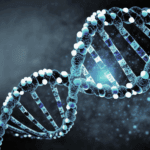In the not-so-distant past, hearing someone had a heart attack was practically synonymous with a death sentence. Today, that’s no longer the case. Thanks to enormous leaps in medical science, better awareness, and healthier habits (at least for some), deaths from heart attacks have dropped dramatically in the U.S.
A new study analyzing five decades of health data found that between 1970 and 2022, deaths caused by heart attacks in adults over 25 fell by an astonishing 89%. Overall, heart disease deaths dropped by 66%, which is a massive public health success by any standard.
But here’s the twist: while one arm of heart disease is losing steam, others are quietly picking up the slack.
The Quiet Rise of Other Heart Conditions
Heart attacks (or myocardial infarctions, if we’re being technical) used to account for more than half of all heart-related deaths. But now, they’re responsible for less than a third. That’s the good news.
The not-so-good news? Deaths from other types of heart conditions are rising—and fast. These include:
- Arrhythmias, such as atrial fibrillation (AFib), where the heart’s rhythm gets irregular or chaotic. Deaths related to AFib have soared by 450% since the ’70s.
- Heart failure, where the heart gets too weak to pump blood effectively, has seen a 146% increase in deaths.
- Hypertensive heart disease, caused by chronically high blood pressure, has increased by 106% in death rates.
These conditions may not always make the headlines like heart attacks do, but they’re just as dangerous—and often more persistent.
Read more: Liver Damage Linked to Supplement Use Is Surging, Sparking Scientific Alarm
Why Are These Conditions Increasing?
Several factors are behind this shift, and many of them have nothing to do with genetics or luck.
1. Lifestyle Shifts That Work Against Us
A major contributor is how we live now compared to the 1970s. The rise of processed food, desk jobs, fast food delivery, screen time, and sugary drinks hasn’t exactly done our hearts any favors.
- Obesity levels in the U.S. tripled, from 15% in 1970 to 40% in 2022.
- Type 2 diabetes and prediabetes now affect nearly half of all U.S. adults.
- High blood pressure cases jumped from 30% to nearly 50% in the same timeframe.
These conditions stress the heart over time—slowly eroding its function until it begins to fail or misfire.
2. We’re Living Longer, But Not Always Healthier
The Baby Boomer generation—born between 1946 and 1964—is now well into their senior years, when heart disease risk naturally increases. And while people are surviving longer, many are living with chronic conditions that make heart problems more likely.
Dr. Latha Palaniappan of Stanford University, one of the study’s senior authors, emphasizes the need for a shift in focus: “The goal isn’t just to live longer—it’s to live longer with a healthy heart.”
Surviving Doesn’t Mean Thriving
As Dr. Andrew Freeman, a cardiologist in Denver, points out: “The chances of dying from a heart attack are much lower now—but the chance of developing complications like heart failure or chronic fatigue afterward is still high.”
That means even when people survive an initial heart event, they may spend years managing medications, dietary restrictions, and lifestyle limitations. Shortness of breath, fatigue, and an increased risk of hospital visits become part of daily life.
In Freeman’s words, “It’s one thing to be alive. It’s another to be alive and well.”
Read more: According to Sleep Experts, Changing This One Afternoon Habit Can Help You Sleep Better
The Sugar and Salt Dilemma
When it comes to heart health, sugar and salt are like those charming villains in every story—you don’t always notice the damage they’re causing until it’s too late.
Let’s start with salt. It’s essential to life—our bodies need sodium to function. But in excess, it becomes one of the most common dietary saboteurs of the heart. According to the CDC, about 90% of Americans consume more sodium than they should, often without realizing it. That’s because salt hides in unexpected places: bread, canned soup, processed meats, frozen dinners, and even breakfast cereals. You might not be salting your food at the table, but chances are your food was already seasoned at the factory.
This hidden sodium overload is a major cause of high blood pressure, which forces the heart to work harder than it should. Over time, that extra pressure thickens and stiffens artery walls, increasing the risk of hypertensive heart disease, stroke, and even kidney failure.
Then there’s sugar—particularly the added kind found in sodas, flavored coffees, candy, and baked goods. It may make food taste better, but it also fuels a dangerous cycle. Consuming too much sugar spikes insulin levels, contributes to inflammation, increases triglycerides, and promotes fat buildup around the liver and other organs.
Even more concerning, studies have shown that people who consume 25% or more of their daily calories from added sugars are more than twice as likely to die from heart disease than those who limit it to 10% or less.
The American Heart Association recommends:
- Less than 2,300 mg of sodium per day (ideally under 1,500 mg for adults with high blood pressure).
- No more than 6 teaspoons (25 grams) of added sugar per day for women, and 9 teaspoons (36 grams) for men.
The problem? A single can of soda can already contain 39 grams of sugar—blowing past the limit in just a few sips.
This sugar-salt combo has become a kind of slow-acting heart poison woven into our modern diets. And while moderation is key, the real secret weapon is awareness—knowing what’s on your plate, and making small swaps (like fruit instead of dessert, or spices instead of salt) can have long-term benefits.
🧠 Another Angle: Mental Health and Heart Disease
Heart disease is often framed as a physical issue—arteries, blood flow, muscle strength. But the truth is, your emotional well-being plays a surprisingly large role in how your heart functions.
Chronic stress, anxiety, depression, and even loneliness are increasingly being recognized as powerful risk factors for heart problems. When your brain is in distress, your body doesn’t just shrug it off—it reacts.
Here’s how:
- Stress hormones like cortisol and adrenaline surge, which can increase your heart rate and tighten blood vessels.
- Over time, this repeated stress response contributes to higher blood pressure, arterial inflammation, and damage to blood vessels.
- People under chronic emotional stress are more likely to adopt unhealthy coping mechanisms like overeating, smoking, skipping exercise, or binge-drinking—all of which add extra burden to the heart.
In one 2021 study from Harvard Medical School, people with elevated stress levels were found to have a much higher risk of developing atrial fibrillation—a type of irregular heartbeat that can lead to blood clots and strokes.
Even grief, particularly following the death of a loved one, has been linked to what doctors call “broken heart syndrome”—a real, temporary heart condition known as stress cardiomyopathy, where intense emotional distress mimics the symptoms of a heart attack.
What’s worse, mental health challenges can also affect recovery. People with untreated depression after a heart attack are less likely to stick to medications, attend rehab sessions, or follow a heart-healthy lifestyle—raising the chances of another cardiac event.
The heart and mind are far more connected than we once thought. That’s why cardiologists and mental health professionals now encourage a whole-person approach to care. It’s not just about treating blocked arteries—it’s about understanding the emotional terrain behind those blockages.
Simple things like regular social connection, therapy, meditation, journaling, and even just taking a daily walk in nature have been shown to lower stress hormones and promote better heart health.
In short, a happy heart isn’t just one that eats well and exercises. It’s also a heart that’s heard, supported, and emotionally nourished.
Prevention Starts Young—Really Young
Doctors now say that preventing heart disease shouldn’t start in your 40s or 50s. It should start in childhood.
Why? Habits formed early tend to stick. Children who eat a balanced diet, stay physically active, and manage stress well are far more likely to grow into adults with healthy hearts.
This means better school lunches, more physical education, less screen time, and more mental health support from an early age.
Read more: What Happens to Your Body When You Completely Cut Out Sugar
The Takeaway: A Changing Heart Disease Landscape
We’ve made huge progress in tackling heart attacks—and that’s worth celebrating. But the landscape of heart disease is changing. Other, slower forms of heart trouble are quietly becoming more dangerous.
In short: heart disease isn’t going anywhere. It’s just changing outfits.
To truly reduce heart-related deaths and suffering, public health efforts need to evolve too. That means focusing not only on emergency treatments but on lifelong prevention—through diet, activity, mental wellness, and early education.
The next big leap in heart health might not come from an operating room. It might come from a grocery store aisle, a gym class, or even your kitchen.










